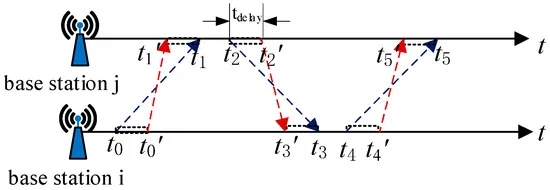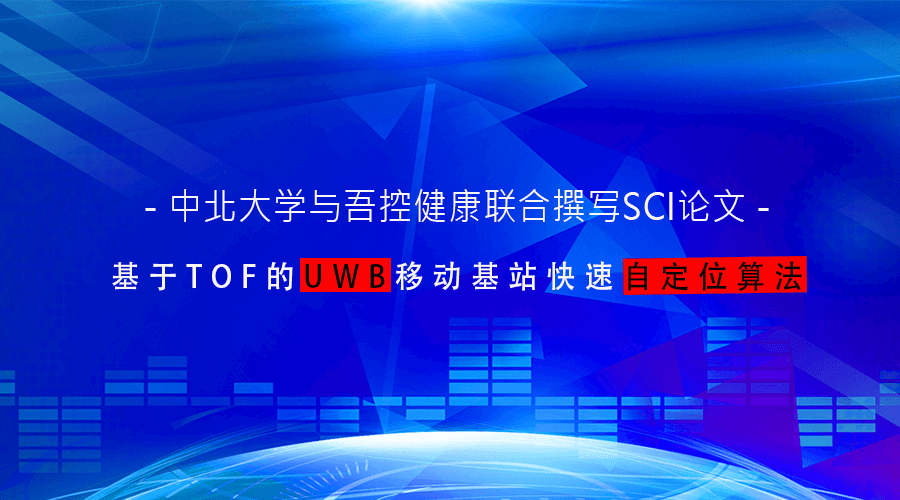1. Introduction
Emerging industries such as “smart sports” and “technological sports” have gradually become an significant part of the sports and health industry. “High-tech + sports” as an emerging cross-research discipline applies the concept of technology to sports, making the development of fitness and competitive sports present a trend of integration and digitalization of high-tech technologies.
Due to the implementation of scientific sports, the requirements for real-time and precise positioning of athletes are getting higher and higher. The positioning equipment for athletes requires accuracy of decimeter level and a data update rate greater than 10 Hz, which can accurately display the position of athletes in real-time. UWB position is carrier-free communication technology, and its data is transmitted on a nanosecond baseband narrow pulse [1]. Therefore, the system complexity and power consumption of the transceiver can be reduced. The ultra narrow pulse enables the UWB signal to have a high time resolution, which can achieve centimeter-level positioning accuracy [2]. Compared with Bluetooth [3], Wifi (Wireless Fidelity) [4], Ultrasonic [5], RFID (Radio Frequency Identification) [6], GNSS (Global Navigation Satellite System) [7,8], and other positioning technologies, UWB technology has been widely used in the field of indoor and outdoor positioning by its advantages such as low consumption, low system complexity, high multipath resolution, and high system security [9].
The accuracy of UWB base station coordinates directly affects the positioning accuracy of athletes. Therefore, accurately obtaining the position of the UWB base stations is of great significance to the positional accuracy of the athletes. However, the traditional method for acquiring the position of the base station requires manual measurement with the help of tools, and it is not convenient to manually measure the position of the base station in a larger sports field. In addition, the ideal real-time positioning system should achieve the characteristics of measuring according to the site conditions, but the traditional base station positioning method does not meet the needs for rapid deployment.
In order to solve this problem, Yang Xiaofei [10] and others introduce an automatic configuration method for UWB indoor positioning base stations. A virtual triangle is constructed by the distance relationship between a base station at an unknown location and two base stations at a known location. The relative coordinates of the unknown base station are obtained using the law of cosines. Zhang Meiyan [11] and others propose an iterative self-positioning and calibration method for UWB base stations. The n self-positioning base stations are sorted according to the x-axis coordinates in the coordinate system from small to large; the distance between the n self-positioning base stations and the two base stations with known positions is calculated by the Least Square method to obtain the position coordinates. Yu et al. [12] describe a self-calibration method for base station’s position for indoor positioning. The Markov State Transition Equation is used to calculate the state vector of all the coordinates between the base stations. The iterative trilateral positioning technique is used to estimate the position of the base station. By simulating the minimum ranging error, the final static error is 15 cm. The methods all simplify the base station positioning process, and the base station position self-positioning can be conveniently performed in applications that do not require high base station positioning accuracy. However it does not meet the requirements of high-precision positioning in sports fields.
In order to improve self-positioning accuracy, Vashitha [13] et al. introduce a self-calibration scheme that uses UWB pulse radio to determine the location of base stations. The positioning method uses Differential Time difference of arrival technology for ranging, and the positioning error is small within 10 m, but the system complexity is high because it uses the method of clock synchronization. M. Hamer [14] and others propose an algorithm that uses Time Difference of Arrival to estimate the position of base stations. This algorithm is strict in assumptions. It requires four base stations to be placed at known positions. In applications with more base stations, the positioning time of the base stations can be effectively reduced. However it is not suitable for personnel positioning in sports fields with a small number of base stations.
In order to quickly locate the mobile base station in the sports field, this work proposes a TOF-based [15] fast self-positioning algorithm for UWB mobile base stations. First, a local coordinate system according to the layout of base stations in the sports field is established. An equation based on the distance measurement information between base stations established. Then, the Least Square method is used to calculate the coordinates of each base station, and finally, the Newton iteration method is used to converge the positioning results. Base stations are arranged in the sports field as needed, and the relative positions of the base stations can be quickly located by communicating with each other between the base stations. This method can reduce the deployment time and cost of base stations, reduce the workload and difficulty of deploying UWB mobile base stations. The system is applied to the scene of movable base stations in sports fields, the experiment proves that the whole feasibility of the system, the accuracy of the positioning algorithm is within 0.05 m. It takes 0.2 s to complete a positioning experiment, which can quickly and accurately determine the coordinates of the movable base stations in the sports field.
2. Establishment of Ranging Error Model
This work uses DecaWave’s DW1000 chip for ranging experiments. Because time delay and clock drift will affect the ranging accuracy, it is necessary to establish an error model to reduce the ranging error.
2.1. Clock Drift
Assuming that there are
n base stations in the sports field, any two base stations can communicate and range between them. In order to reduce the ranging error caused by the clock error of the base station, the technology of Symmetric Double-Sided Two-Way Ranging (SDS-TWR) between the base stations is carried out, as shown in Figure 1. Base station
i initiates the first ranging message and records the sending timestamp
t0; base station
j records the receiving timestamp
t1 while generating response information records the sending timestamp
t2; when base station
i receives the data, it records the timestamp
t3, then base station i sends data with timestamps
t0,
t3,
t4, base station
j receives and records timestamp
t5, and four time differences can be obtained. The base station
j calculates the distance to the base station
i according to the time difference [16].

更多全文信息联系吾控健康...
深圳吾控健康科技有限公司是一家国家认证的高科技民营企业。公司长期专注于室内导航定位及智能穿戴产品的研发;具有完整产品设计,研发,生产制造能力;公司依托自有研发团队,整合国内外厂商及专家及高校前沿技术力量,锐意进取,积极创新;致力于物联网场景中的人员智慧综合管理系统解决方案的开发和推广。
公司具有系列化穿戴设备以及人员精确定位及物联网关,具备丰富的物联网系统的设计、安装、实施、使用、维护经验和客户使用成功案例,以及多年来的用户应用管理经验,使我们的技术和产品更加成熟。目前,公司形成了多种基于可穿戴及物联网技术的系统解决方案,包括:
智慧监狱,精神病院,司法管理领域人员定位;
智慧校园学生安全及运动管理;
智慧工厂工地人员安全及效率提升管理;
智慧医院及居家养老照护管理;
智慧体育场馆运动健康管理等领域。

 Yuxiang Han1
Yuxiang Han1 ,
, Xiaoming Zhang1,2,*,
Xiaoming Zhang1,2,*, Zhengxi Lai 3 and
Zhengxi Lai 3 and Yuchen Geng 1
Yuchen Geng 1


